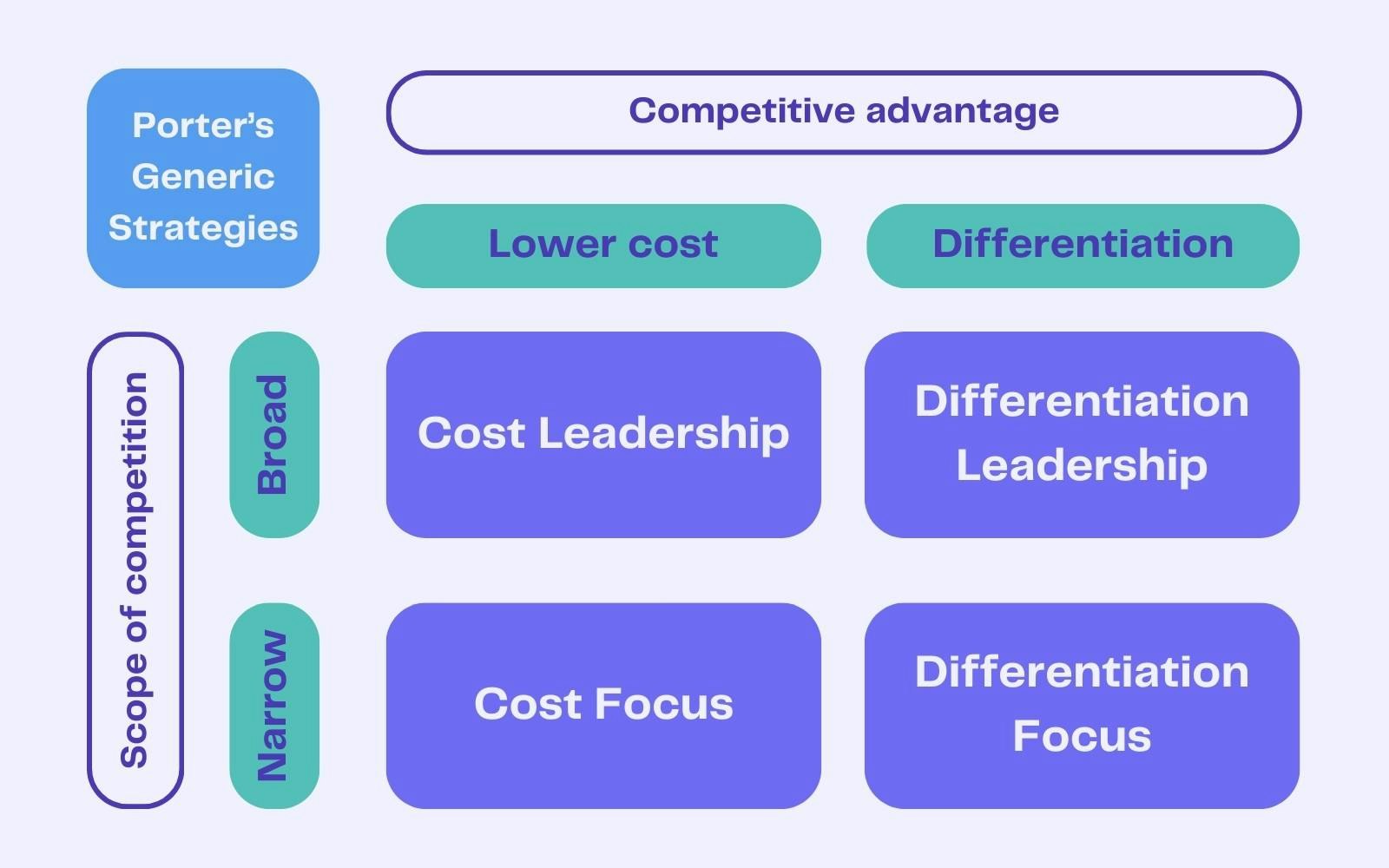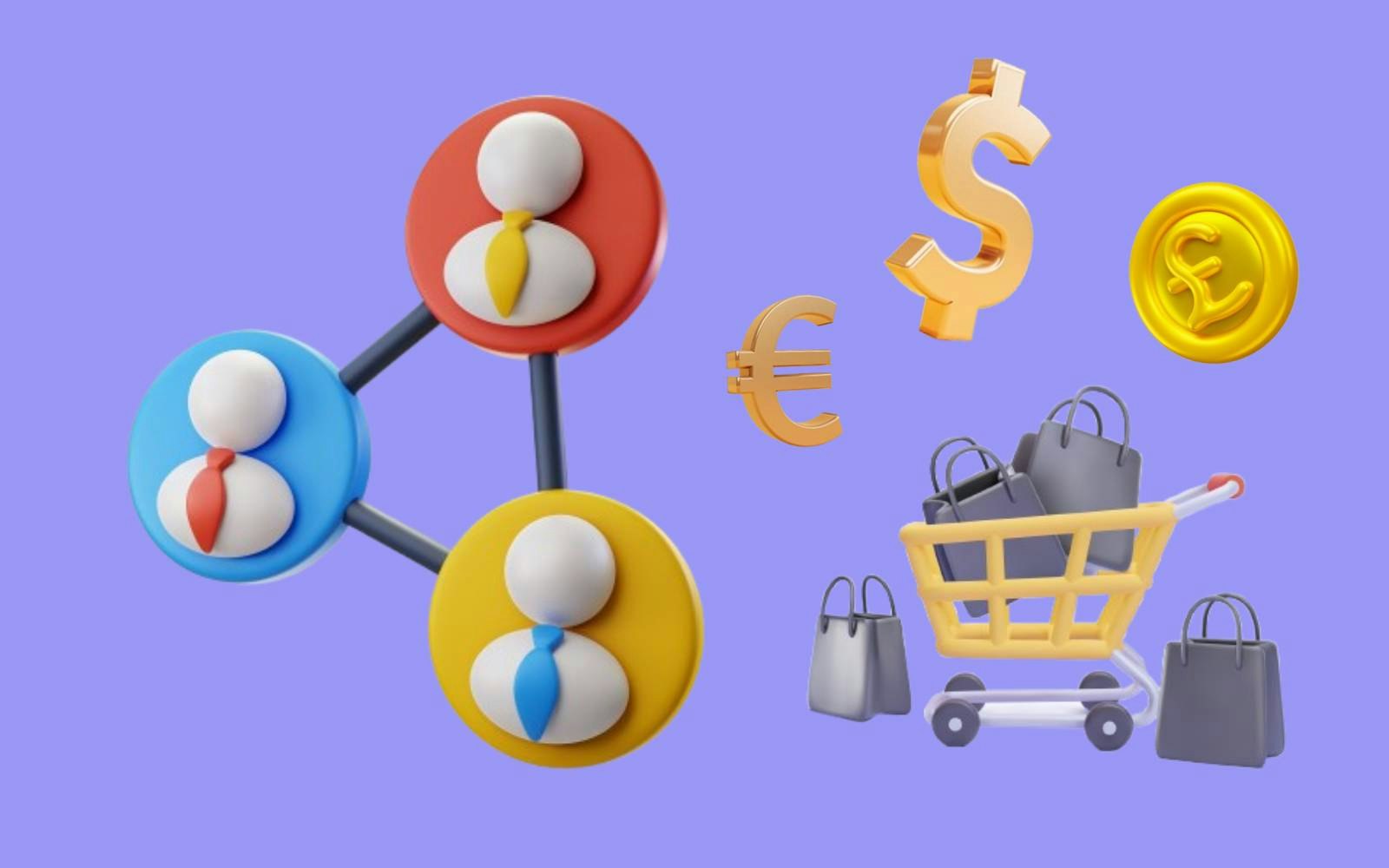
Differentiation strategy as a competitive advantage
6min • Last updated on Mar 17, 2025

Olivier Renard
Content & SEO Manager
What do Dyson, Netflix, Apple, Tesla and Airbnb have in common? These companies have successfully set themselves apart by offering a unique proposition in their market.
Their secret weapon: a differentiation strategy that makes them stand out from the competition. But what does this marketing approach involve, and how can it be applied effectively?
Key facts:
A differentiation strategy enables a company to stand out from the crowd thanks to a unique value proposition.
It relies on several key levers, such as innovation, brand image, customer experience, and personalisation.
When applied effectively, it provides a competitive advantage, enhances customer loyalty, and justifies higher pricing.
It must be clearly defined and measurable, while avoiding unclear positioning or excessively high innovation costs.
👉 Discover what a differentiation strategy is, its levers and its benefits. Explore concrete examples and learn how to apply it effectively to set yourself apart. 🎯
What is a differentiation strategy?
Definition and fundamental principles
A differentiation strategy consists aims to make a company or a product unique in the eyes of consumers. Rather than competing on price, it relies on distinctive elements that justify a higher perceived value.
This approach enables businesses to stand out from competitors, attract a loyal customer base, and create a sustainable competitive advantage. It is closely linked to the notion of price skimming.
Brands that successfully differentiate themselves are no longer judged solely on price but on the added value they provide—whether through innovation, exclusivity, or a strong brand image.
Differentiation vs. other pricing and positioning strategies
Michael Porter described the three generic strategies available to companies to position themselves in their market. In the 1980s, when marketing was still referred to as the 4Ps, the Harvard professor distinguished between cost leadership, differentiation and focus.
Cost leadership aims to offer the lowest prices, while focus targets a niche market with a highly specialised offering.
Differentiation focuses on perceived value. It applies to both niche markets and broader audiences. Rather than targeting the widest possible customer base, it aims to attract a specific segment willing to pay more for a unique experience.

Porter's Generic Strategies
The product or image approach
There are two main ways to differentiate your brand. They can be combined to reinforce the impact of the brand:
Product differentiation: this is based on unique features in the product offering. This may involve greater simplicity, better service, specialisation or greater sophistication.
Examples: technological innovation, such as Dyson bagless hoovers. Superior quality or distinctive design, such as Tesla's premium electric cars.
Image-based differentiation: Here, brand identity is the key differentiator. Branding, storytelling, and customer experience help create a strong connection with the audience.
Examples: Apple with its premium universe, Nike with its inspiring slogan ‘Just Do It’.

James Dyson's inventions (Source: Dyson)
Why adopt a differentiation strategy?
To gain a sustainable competitive advantage
In a saturated market, differentiation helps escape the price war. A brand that focuses on innovation, quality, or a unique experience retains customers more easily.
These customers are then less likely to compare prices and instead prioritise the offer that best meets their expectations.
Maximising the perception of value and profitability
A differentiation strategy increases the perceived value of the offer and therefore its price. This approach is particularly effective in premium strategies, where brand image and user experience play a key role.
Standing out in saturated markets
When there are so many players offering similar products, a brand needs to stand out from the crowd if it is to attract attention.
A brand like Apple has made an art of this with its Macintosh computers and iPhones. By offering a unique experience, it has built up a loyal community that has strengthened its positioning and appeal over the long term.

Steve Jobs and the first Macintosh (Source: Apple)
Risks and limitations
High cost and complex implementation
Differentiation requires substantial investment (R&D, branding or customer experience). Creating a strong image or developing unique features requires time and resources.
What's more, poorly executed differentiation can undermine the coherence of the offering and weaken the brand.
Non-reception by the market
A highly specific offering is no guarantee of success on its own. If the customer does not clearly perceive the added value, the strategy may fail. Amazon's Fire Phone, for example, failed to convince the public despite its unique features.
Examples of successful strategies
Adopting a differentiation strategy requires a structured approach to ensure its effectiveness:
Understand your market and the competition: analyse existing offerings to identify the positioning of other players and trends.
Define your target and your competitive advantage: clarify what makes your offer distinctive in the eyes of customers, and integrate it into your strategy.
Focus on customer experience and communication: ensure consistency between the product, the message and the customer's perception.
Measure and iterate: A successful differentiation strategy requires continuous adaptation. Monitor feedback from your customers, analyse the results and adjust if necessary.
The discovery of a blue ocean
The blue ocean is a concept theorised by W. Chan Kim et Renée Mauborgne. It refers to a new market with no direct competition, as opposed to a red ocean saturated with competitors.
Netflix is a good example. Rather than competing with traditional television channels or DVD rental companies on their own turf, Netflix has created a new experience by focusing on streaming. This global success has forced the entire industry to adapt.
This ‘over the top’ approach relies on the transformation of an existing usage to differentiate itself. Netflix has revolutionised the market by removing the physical constraints of DVDs and offering a subscription model based on a catalogue that can be accessed at any time, on any screen.

Netflix DVD (Source: Netflix)
Focus on the user experience
Amazon Web Services (AWS): Turning cost into opportunity
Amazon has built its competitive advantage by optimising the end-to-end user experience. One of its strokes of genius? Turning a cost centre into a profit centre with AWS.
Amazon originally developed a high-performance cloud infrastructure to ensure smooth, fast browsing on its e-commerce site. Rather than limiting this technology internally, the company marketed this capability to other companies in the form of Amazon Web Services (AWS), which has now become the world leader in cloud computing.
The iPod: a response to user frustration
Before the iPod, listening to music on the move was limited by the medium. The Discman was not very ergonomic and meant that you had to take your favourite artist's CD with you. Steve Jobs recognised this frustration and launched the iPod with a simple promise: ‘1,000 songs in your pocket’.
By combining a sleek design, large storage capacity and seamless integration with iTunes, the iPod embodied differentiation through user experience.
Tesla: differentiation through innovation and brand image
Tesla is not just a car manufacturer. The iconic brand led by Elon Musk has differentiated itself in two ways:
Technological innovation: Tesla has established the electric car as a credible alternative by investing massively in battery autonomy, over-the-air updates and assisted driving.
Premium positioning: Unlike traditional electric cars, which are often perceived as unattractive, Tesla has banked on an image of advanced technology and performance, comparing itself directly with luxury brands.
Measuring effectiveness and adapting
For a differentiation strategy to work, it is essential to monitor the right indicators and adjust the trajectory according to the results.
KPIs to monitor
There are a number of indicators that can be used to assess the impact of differentiation:
Brand awareness: changes in brand searches, mentions on social networks.
Customer perception: satisfaction surveys, customer reviews, Net Promoter Score (NPS).
Pricing power: ability to maintain high prices without losing customers.
Tests and adjustments
Effective differentiation must evolve with the market. To do this:
Analyse customer feedback: identify what works and what needs to be improved.
Test new approaches: message variations, product innovations, price repositioning.
Monitor the competition: adapt to changes in the market without losing your identity.
DinMo helps companies use their customer data to refine their marketing activities and offer personalised communication.
Conclusion
Differentiation is the key to standing out from the crowd, building customer loyalty and maximising profitability. Whether through innovation, customer experience or brand image, a well thought-out strategy offers a real competitive advantage.
Differentiation is based on a detailed understanding of the market and customer expectations.
🚀 Find out how DinMo can support your development and boost your business!
FAQ
How can businesses identify points of differentiation?
To identify differentiation points, businesses need a strategic analysis of their market, customers, and competitors. A competitive analysis helps understand what competitors offer and where gaps exist.
Customer needs and expectations should be assessed through surveys, reviews, and feedback loops. Companies can also leverage supply chain improvements, product innovation, service quality, or branding strategies to stand out.
A differentiation strategy should focus on aspects that customers value the most, such as superior product quality, unique design, or personalised services. Additionally, businesses can use Porter’s value chain analysis to identify key areas where they can create and deliver higher value than their competitors.
How does differentiation strategy impact business performance?
A well-executed differentiation strategy directly enhances business performance by creating a competitive advantage. Companies that successfully differentiate their products or services can increase customer loyalty, reduce price sensitivity, and improve profit margins.
Differentiation also allows firms to charge a premium price, leading to higher revenue and long-term profitability. Moreover, strong brand positioning helps businesses attract new customers while fostering retention.
By focusing on innovation, quality, and customer experience, firms can build a sustainable market position that competitors find difficult to replicate. However, differentiation must be consistent and aligned with market demand to maintain a strong impact on performance and growth.
What are the main challenges companies face when implementing a differentiation strategy?
One major challenge is the high cost associated with product development, branding, and customer experience enhancements. Companies must balance differentiation costs with profitability to ensure a sustainable business model.
















